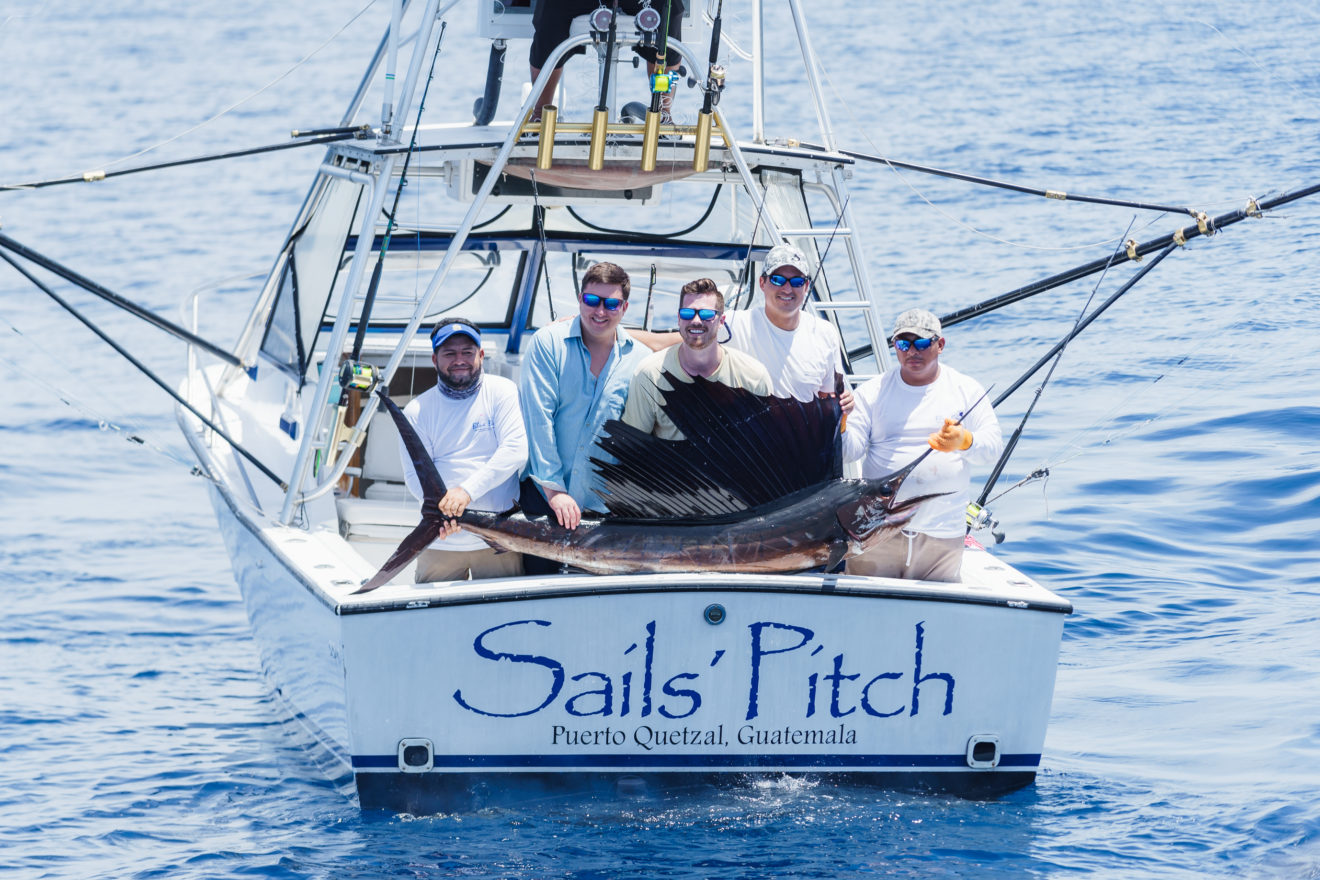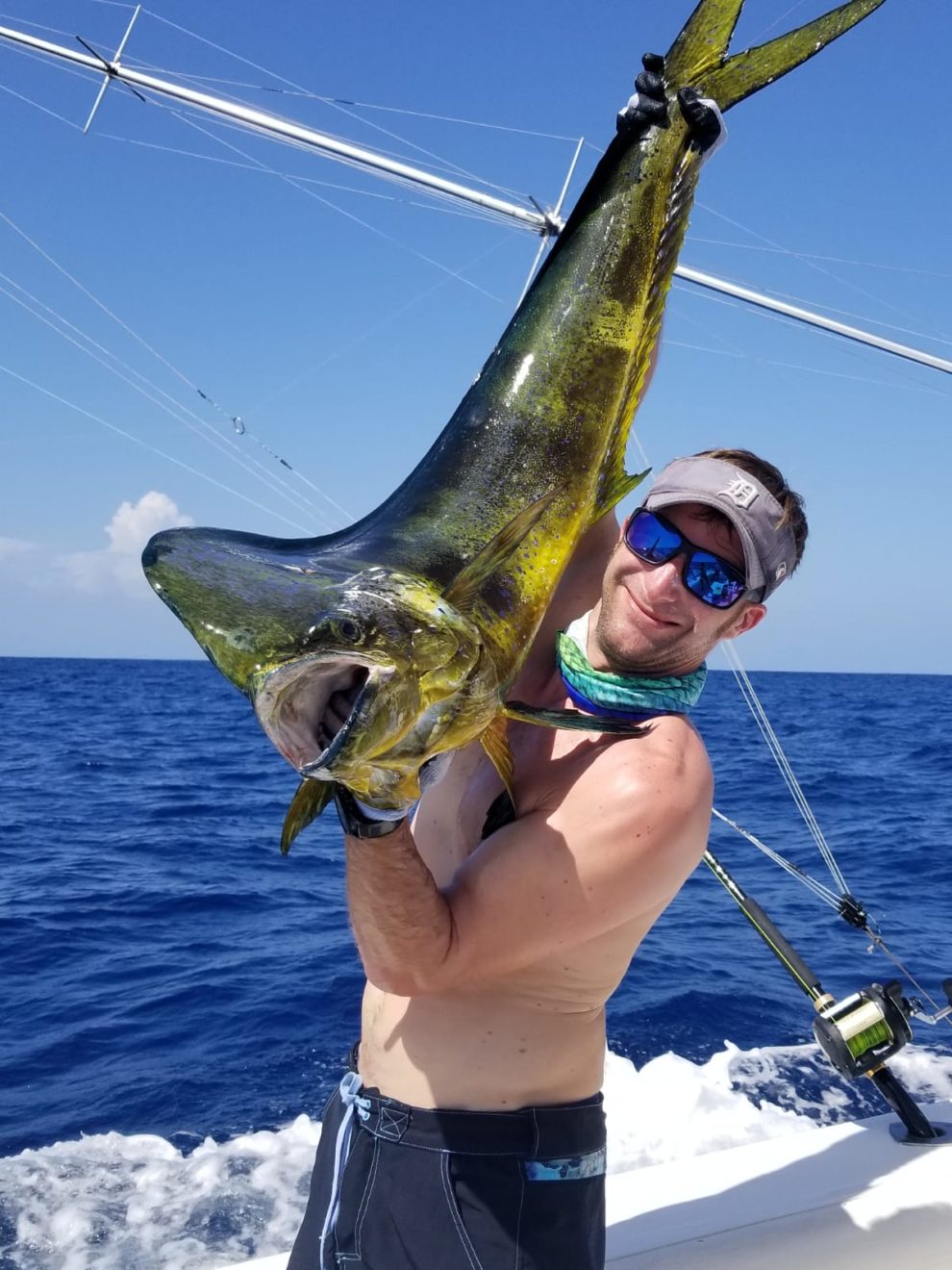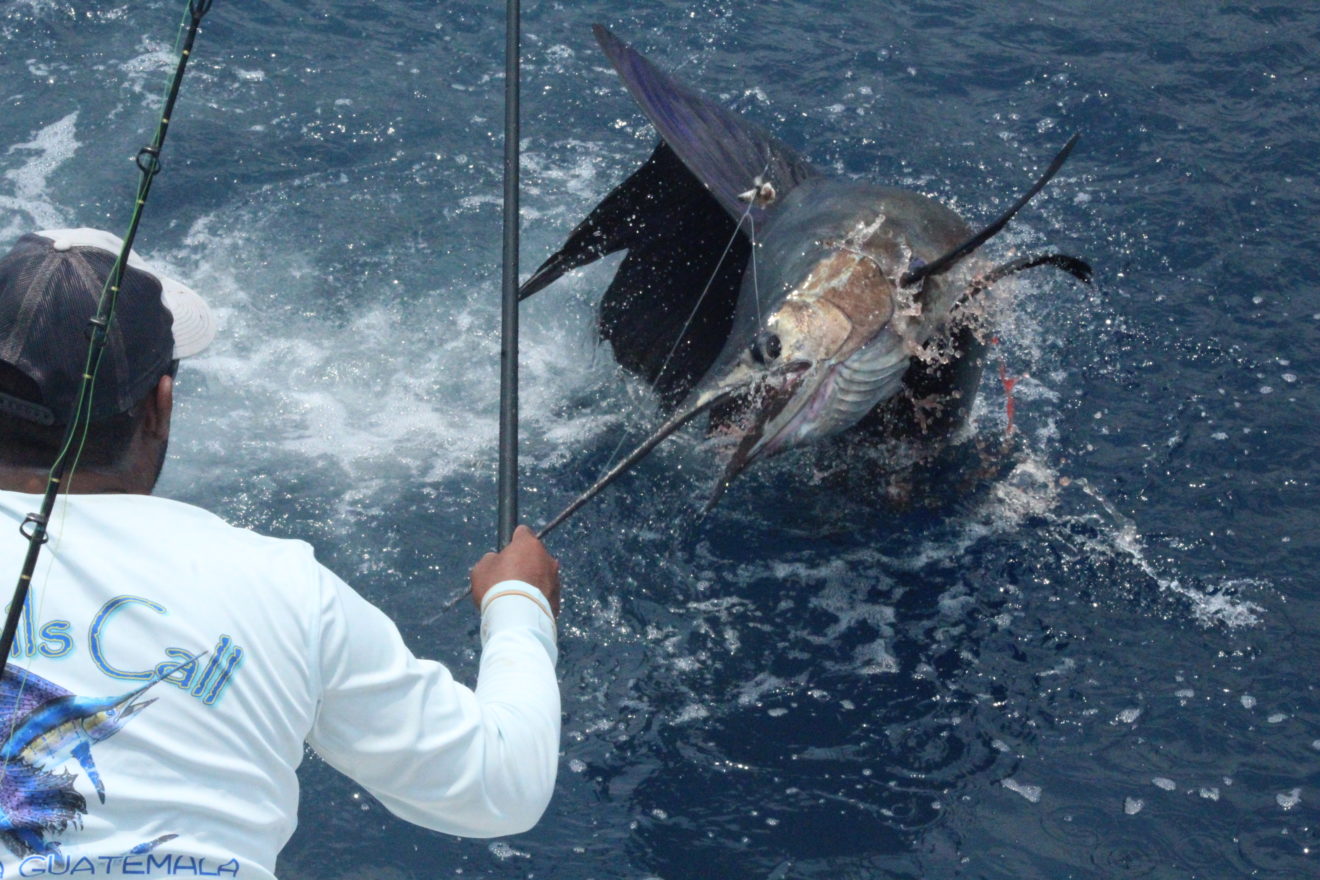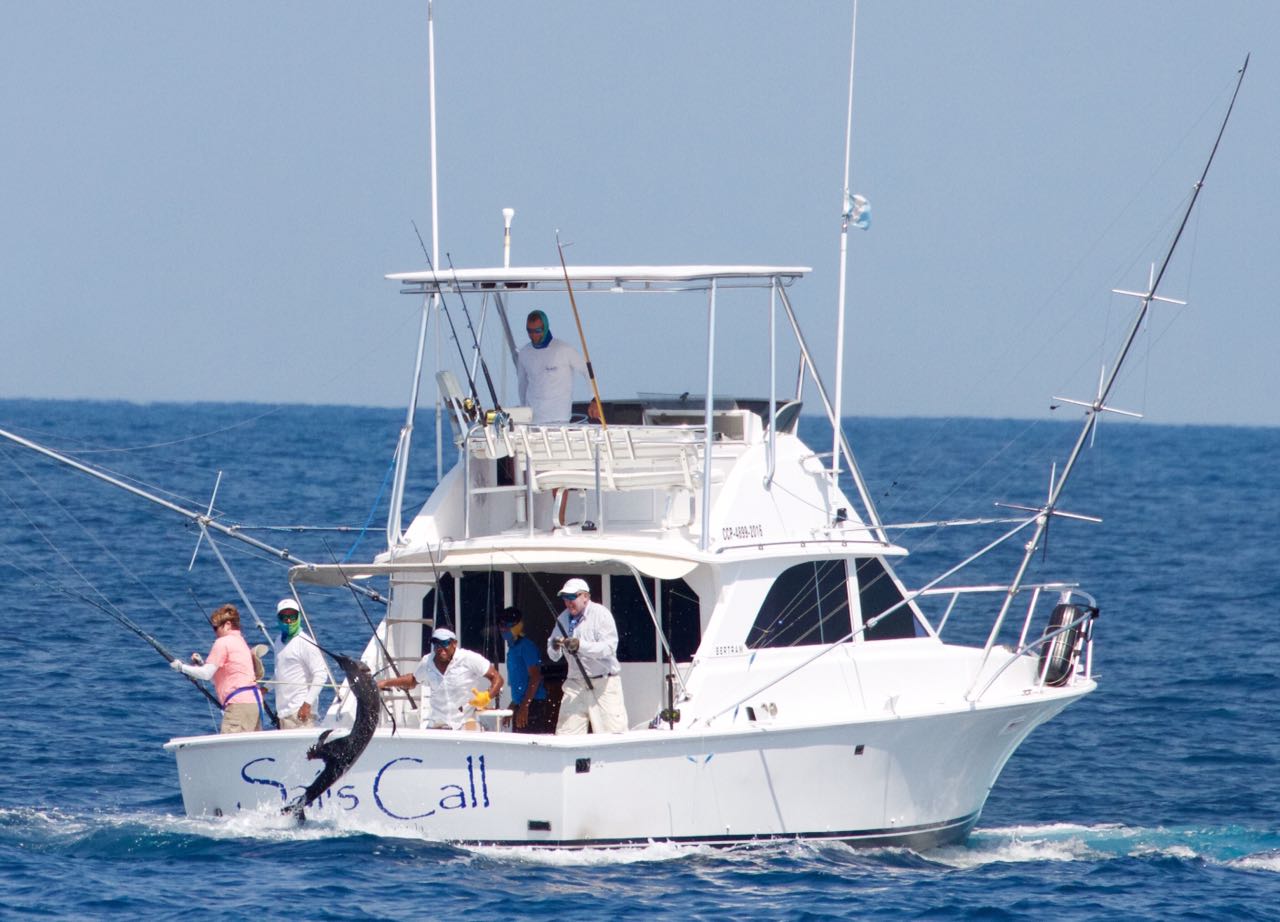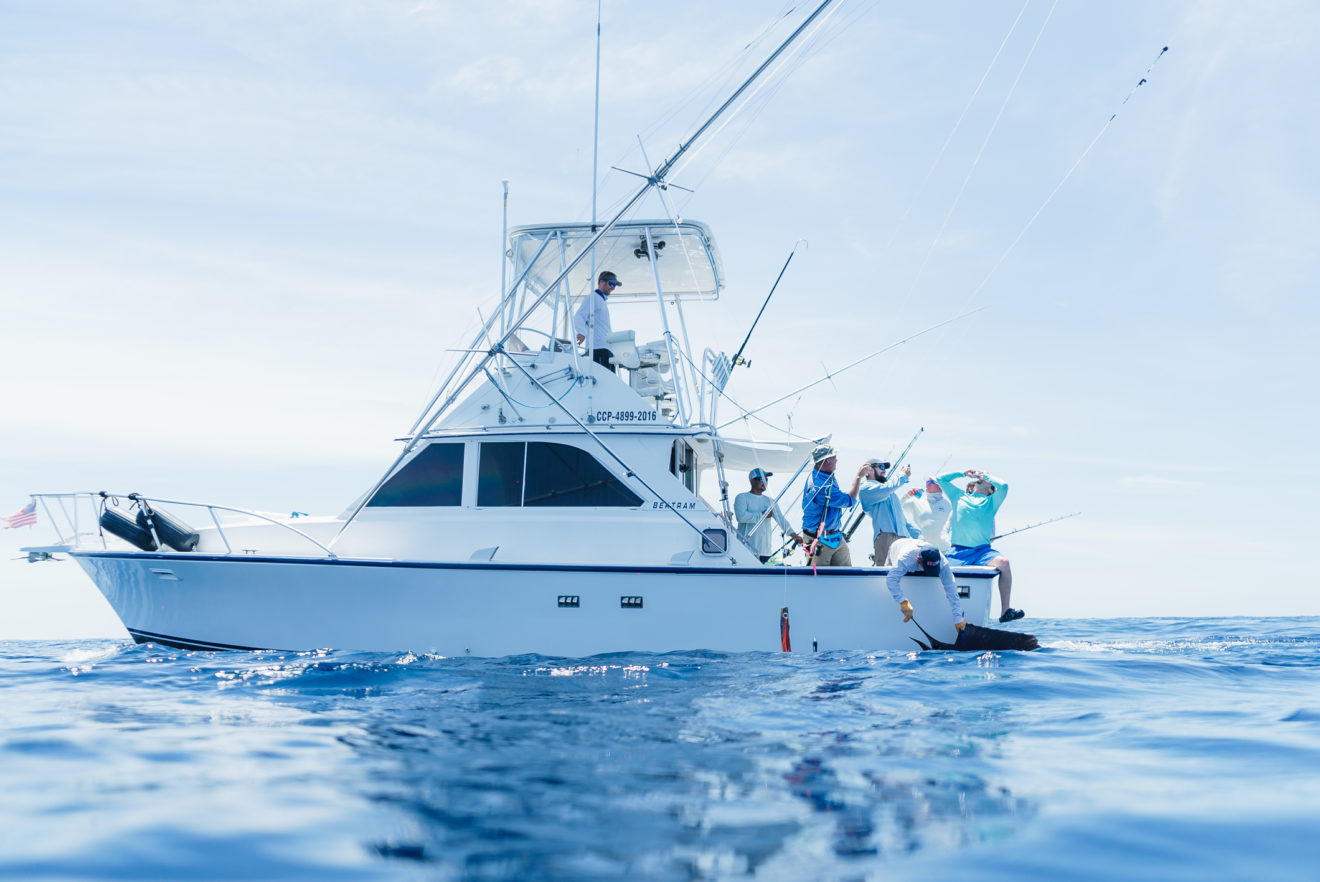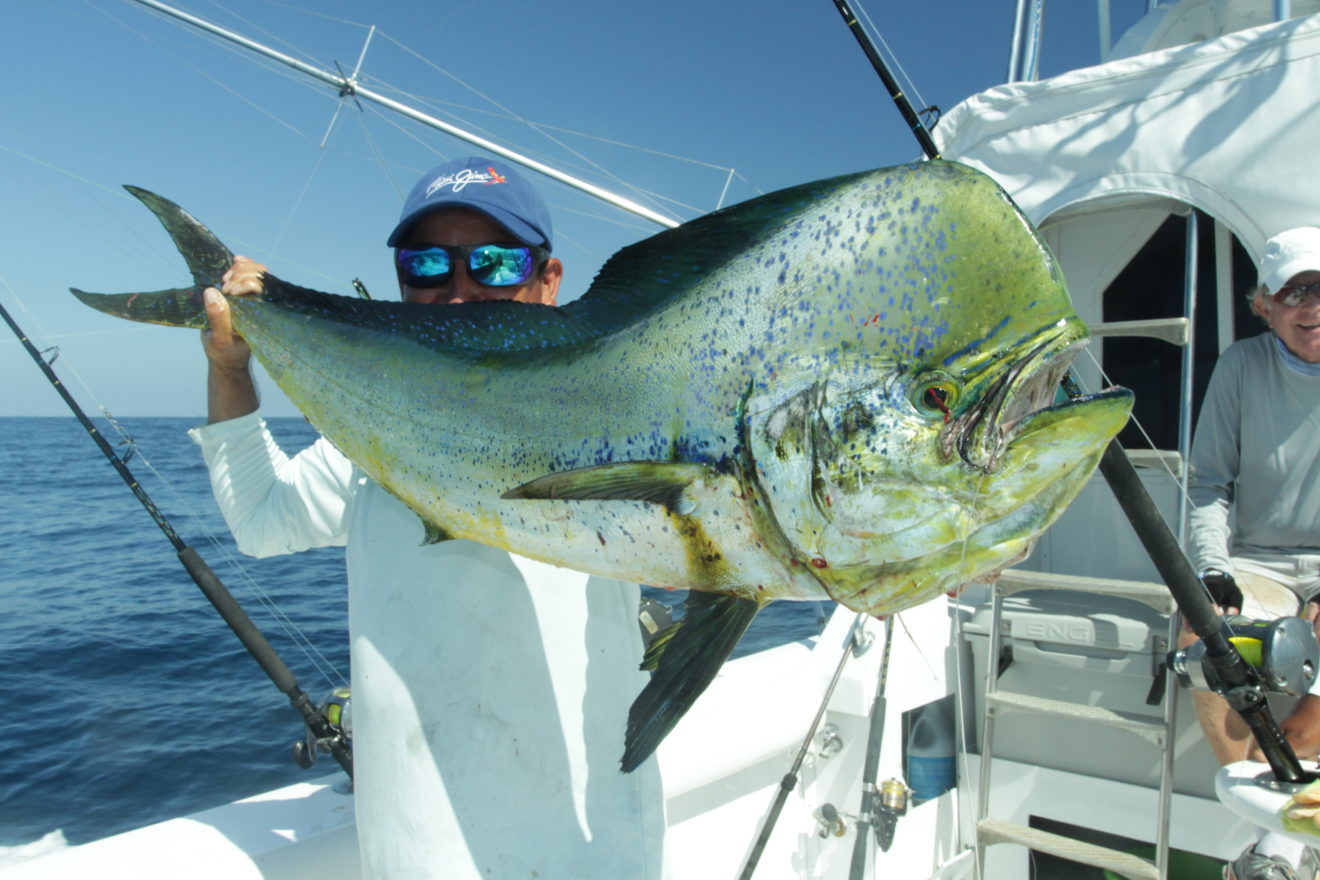Guatemala: The Best Billfish Fishery in the World!
What makes an excellent billfish fishery? My name is Capt. Chris Starrs and I’m the owner and head Captain at Blue Bayou Lodge in Iztapa, Guatemala. For 12 long years, I have been fishing on Guatemala’s famous Pacific coast. I mostly run my 35’ Bertram called ‘’Sails Call.’’ My article aims to help you understand the balance we have in such a fishery while teaching you new approaches to catching billfish. At the same time understanding the balance we have in such a fishery while teaching you new approaches about catching billfish (fly fishing & boat driving tactics that lead to more multiple hookups, taking an educated risk to find fish) whether it’s this article or the next article let’s talk fishing!
Donde?
Guatemala is just south of Mexico and just north of El Salvador. We mostly have a Pacific coastline and a small section on the Caribbean. The Caribbean has a shared bay between Belize and Honduras. You can quickly get to Belize’s flats or Honduras’ flats if that type of fishing is your fancy. Both coastlines are some of the more beautiful coastlines you have never seen. This country speaks over 27 languages, mostly Mayan, with Spanish as the official language. To run a lodge or tourist-based company here, you better be quick on your feet and overly prepared. The fishing must be that good to put up with we all do regularly, and it is!
The Struggle?
I am telling you all of this so you can appreciate the efforts to run and successfully manage a lodge here in these latitudes. Some will tell you that developing countries are far behind the United States in many ways. I remember the good ol’ days when you could go out every day and get 40 bites on sailfish, load boxes of slammer mahi-mahi on a lone log, see a couple of blues with any luck, and maybe see 8-10 boats in the distance doing the same thing.
The good ol’ days are still alive and well today! That’s right — how many fisheries in this world can you access by a 3-hour flight from all southern U.S. airports and produce such large catches? Well, you guessed it: GUATEMALA.
It was the mid-90s when Guatemala first showed us such crazy sailfish numbers thanks to guys like Captain Ron Hamlin. Some of those pioneers are still here, while many have moved on. What hasn’t changed is the fisheries’ ability to shock the world with insane sailfish days.
One-hundred-bite days do still occur annually in Guatemala, while the marlin fishery is a new standard with captains getting 2-3 looks on top of a 30-plus sailfish bite day.
It’s all here, and it’s all in the mix. That includes monster mahi-mahi and very good quality yellowfin tuna. All of this transcends into ‘’shots.’’ If you’re a lite tackle guy wanting to get good quick, you need such a fishery to polish your skills. Three days is our standard program.
Whether you’re a fly fisherman or pitching baits to hungry billfish like the rest of us, if I am preparing for the white marlin open, or even a big tournament in Costa Rica, I’d send my team to Guatemala to get some reps! This is who we mostly attend to, as well as everyone else who loves to fish and have lots of action. We get Midwesterners, to Canadians, to fly anglers out west, and many other enthusiasts around the world. There is nothing like watching a quad burn off in the distanced, all hooked up, and watching two more working on the short teasers begging for a bait.
Teaching anglers how to digest that is what we hope to do. For that reason, our repeat bookings make up half of our year’s bookings. It is highly addictive! Remember this is 20lb we use on a 75lb average fish.
Change for Better!
What’s new is the weather patterns in our region. We have even been getting an extended season well into the summer as climate change has caused major drought in these parts. Bad for the farmers, but great for the fishermen who like a slick, calm days, no rain, and plenty of fish.
These months offer lots of variety. This past July, we had a killer three days of 20-plus sails a day, followed by as many Mahi-Mahi as you could reel. Early August — same idea — lots of marlin shots and big blues, 15-20 shots at sailfish, while we load up the cooler of Mahi from 12 lbs to 40 lbs. This billfish highway is more of a bait highway, and the intensity of the species chasing these baits changes ever so slightly. One thing is for sure: sailfish are patrolling in big numbers all year.
The Recipe for Success
In Guatemala, the recipe includes these ingredients: the winds of Tehuantepec, Mexico (to our north), bait, consistent temperature, favorable currents, lack of pressure, and the famous ‘’pocket.’’ The pressure is a big one. Guatemala does NOT allow dredges, and if you have a boat over 60’, we probably don’t have a slip for you.
Tournaments are pretty much in-house and mostly aimed to raise funds for local conservation efforts. More importantly, our lack of development has preserved our fishery. Even commercially, our inlets are limited to half-crazy panga drivers who can only do so much damage. Thanks to new local sport fisher efforts, we are regulating these guys more and more.
We are in a favorable wind zone. There are predominantly east-to-west winds, while we travel due south (south, southeast to southwest, depends), which allows us to get out even on rough days and make a day of it.
Places like El Salvador (after November) have the wind on your bow returning home and, in some cases, you can’t get home quickly (if at all). Yes, we get big blows during cold front months, but those big changes and pushes are when the next bite shows up. It’s the ocean, and you have to find the courage and take it on the chin every once and a while.
Different than El Salvador or Nicaragua below us, straight out of our marina at about 14-15 miles, we hit the bottom of the pocket, which is a steady 800-1200-foot drop. This crack from the continental shelf draws in the current and pushes fish towards the shore. We make average runs of around 20-30 miles, but fifty-mile days do occur, and most boats here are ready for that. Eddy current is what pushes the bait (and fish) round and round to our front door. Now, eddy currents can also make a big mess and push blue water offshore, or even five miles in front of the marina. Some days you are running way down the beach to find blue water. The reason we know it’s there is thanks to websites like ‘’Terrafin.’’ Chlorophyll satellite imagery has changed the game helping us make educated decisions.
Guatemala is a time bubble of a fishery. We would like to have certain things change tomorrow, but by doing so, we would potentially threaten the fishery as other tourist destinations have.
When searching for a billfish destination, I strongly advise you to look hard at the places with little infrastructure. Big resorts often mean tons of pressure and little control on the fishery, which means overly competitive operations, price gouging, and setting low standards to what a good day of fishing should be. These areas have great skippers, but the bargain deals have made them oversaturated. Small marinas and closed niched Captains make for a healthy fishery.
No matter the lodge or boat, we all must work together to find these fish daily, as well as protect these fish, and educate our communities to ensure a future.
Next, let’s talk about this fly-fishing thing!
Captain Christoper Starrs
The Blue Bayou Sport Fishing team started out with the desire to provide a service of first-class fishing and accommodation’s, for a fraction of the cost. We are inviting those who never could have thought about fishing the ”sail fishing capital of the world”, to join us with a desired budget in mind. Our charters limit our expenses by personally providing all of the services and using fuel efficient boats.

